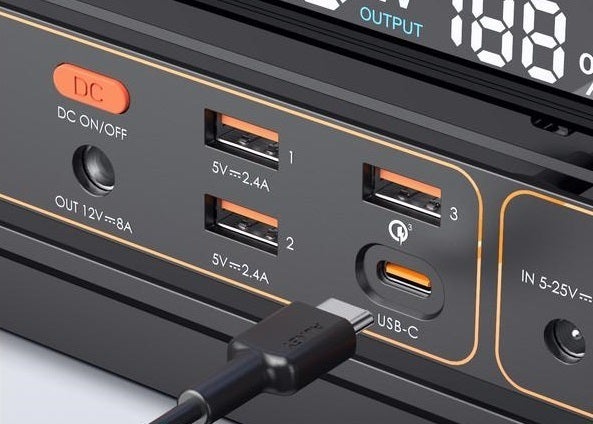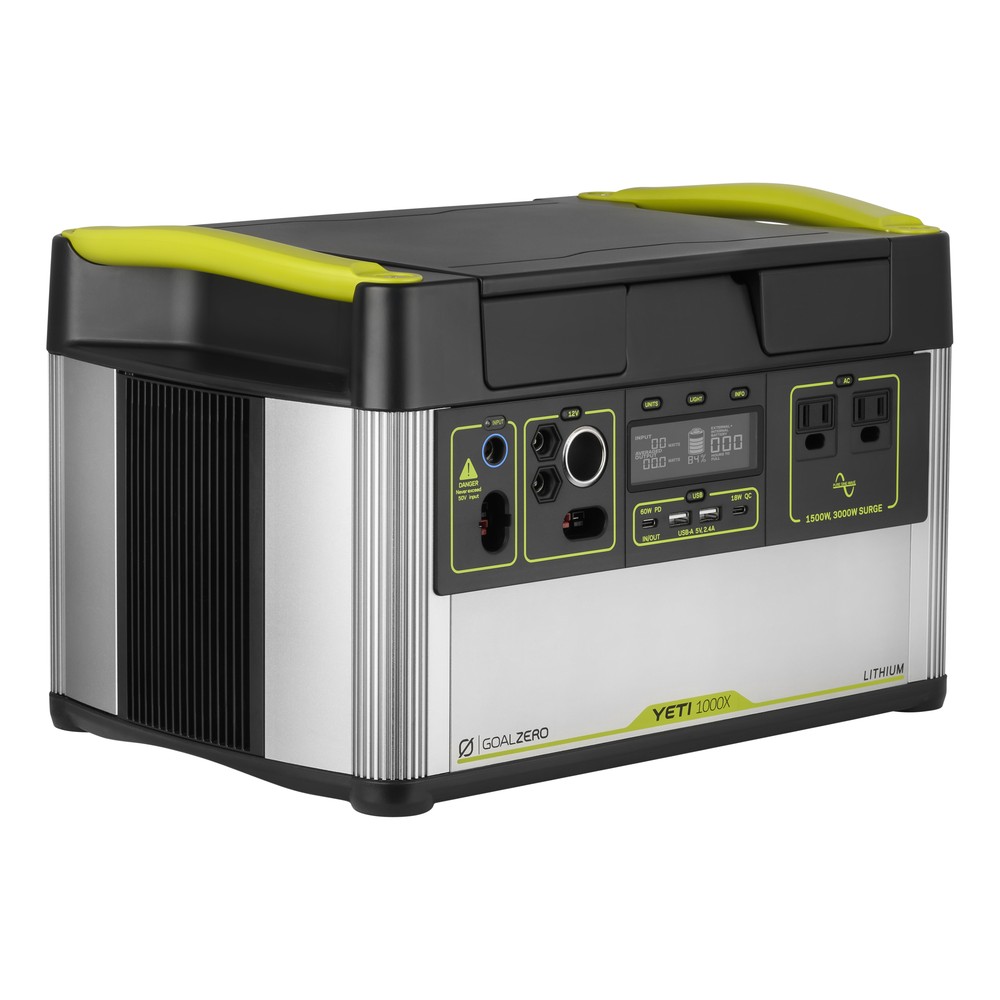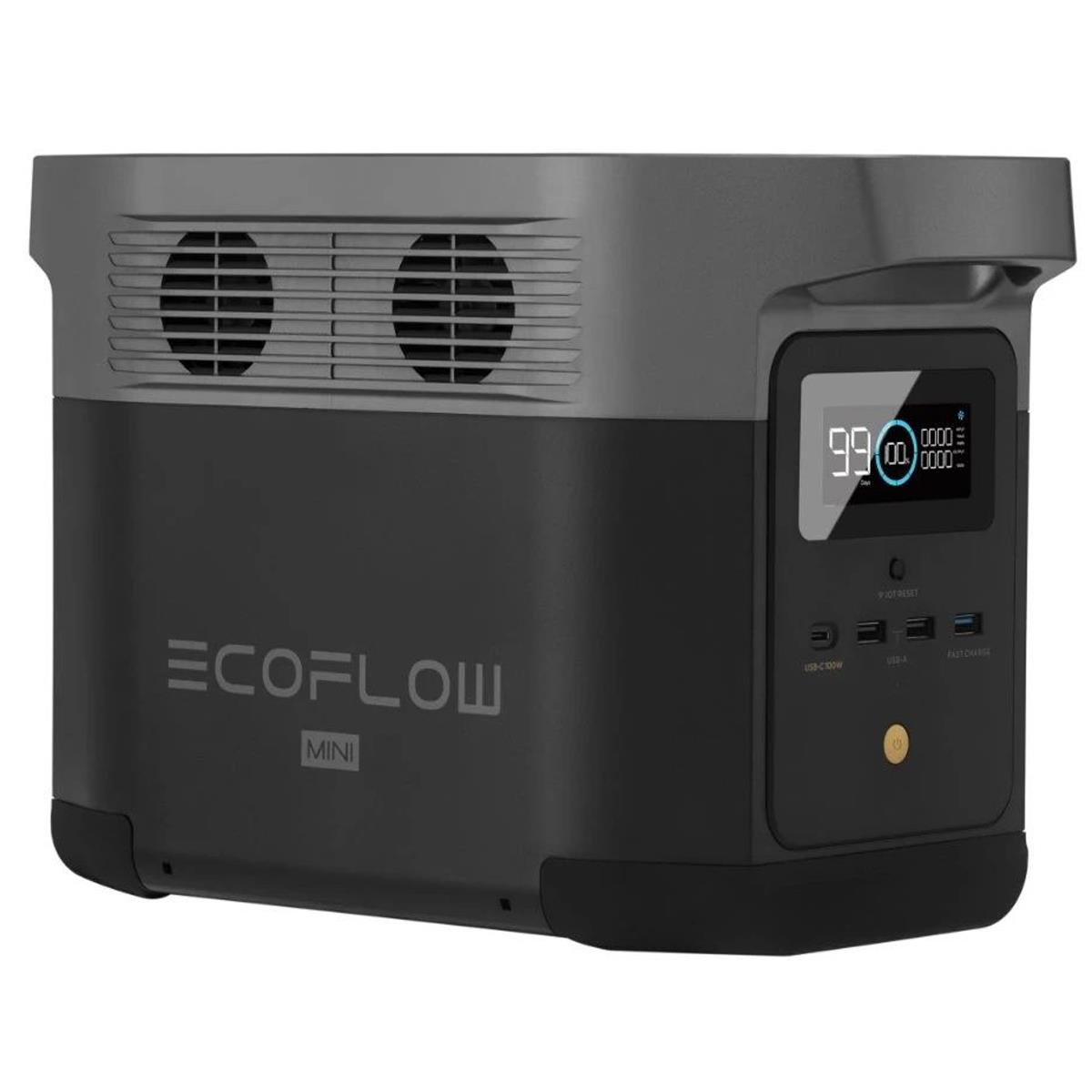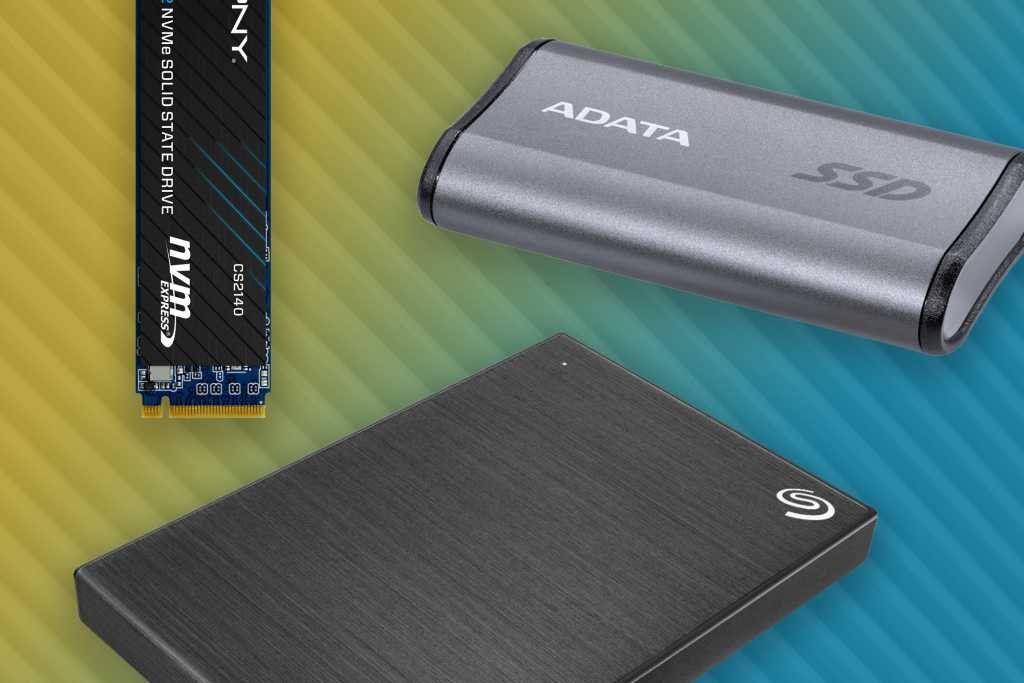It’s easy to see power stations as nothing more than big portable batteries, but they offer much more than just a way to recharge your devices. A Best portable power stations 2023 can light up a room by powering a light bulb or, in some cases, keep a mini-fridge running during a power outage. It can be a great convenience on camping trips, or a medium for a backyard movie night, running a projector and speakers.
The thing is, a portable power station is as versatile as you need it to be. Below you’ll find our top picks for different use cases to help you find the best portable power station for your needs. And below our recommendations, you can find helpful buying advice on which features are most important.
If you’re in the market for a more modest power supply – one you can use to charge a laptop or phone – see our roundup of the best power banks for our top picks in this category.
1. Portable Power Station RAVPower 252.7Wh Power House – Best Overall

pros
- small form factor
- many ports
- Comes with case and built-in flashlight
cons
- Built for quick travel, not extended use
Whether you’re looking for an off-grid weekend power station or want to be prepared for a power outage at home, RAVPower’s 252.7 Wh portable power station can meet the demand. It has a nice addition of ports, plus a carrying handle and a case, and it’s affordable.
Read our full review of the RAVPower Portable Power Station 252.7Wh Power House
2. Aukey PowerTitan 300 – Best overall runner-up

pros
- Great bright display
- many ports
- highly efficient
cons
- Solar panel accessory is a lack
Aukey’s PowerTitan is in close connection with the RAVPower power station above. It also has high efficiency, a good range of ports, a very fast recharge time, and an affordable price. Although, the RAVPower option is the cheaper of the two, giving it a slight edge.
Read our full review of the Aukey PowerTitan 300
3. Goal Zero Yeti 1000X – Best for Trainers

pros
- Energy for days, literally
- Many connection options
If you want maximum preparation, the Yeti 1000X by Goal Zero is the choice for you. This 983 Wh power station can operate multiple appliances even with a power outage. In addition, the Yeti system is expandable, offering options such as a Home Integration Kit to connect the 1000X to your home’s electrical system or a battery expansion to increase the capacity of power stations. It is true that this kind of power comes at a high price.
Read our full review of the Goal Zero Yeti 1000X
4. Jackery Explorer 1000 Portable Power Station – Best for runner-up in preparation

pros
- Lots of energy to circulate
- More than enough ports
cons
- expensive
- It’s heavy in case you want to take it camping
You can probably get the essence of Jackery’s Explorer 1000 by name. Yes, it offers 1000Wh of power to keep appliances or camping gear running. It’s heavy, though, at 22 pounds, so it’s not a backup power source you’ll casually take a trip to the park for. It’s also expensive. But cost and weight are fair tradeoffs when you want the kind of coverage this plant offers.
Read our full Jackery Explorer 1000 Portable Power Station review
5. Mini EcoFlow DELTA Portable Power Station – Best high-tech option

pros
- Robust feature set
- Companion app is useful
- Impressive recharge rate
cons
- OK-ish energy efficiency
- expensive
This compact and rugged 882 Wh power station covers all the bases, offering the capacity and ports to meet your off-grid power needs. It also offers some extra high-tech perks that make it stand out. The power station can connect to your Wi-Fi network and then provide status updates to an app on your phone. There is also an “X-Boost” option that can be enabled or triggered automatically for loads exceeding 1400W.
Read our full EcoFlow DELTA mini Portable Power Station review
What to look for in a power station
Not all power stations are created equal. For example, some stations have the ability to power a microwave, while others can handle the power requirements of a gaming desktop computer. When buying a power station, there are some important aspects to keep in mind. In the list below, I try not to be too technical.
- Consider what you plan to use the power station for to decide the optimal capacity and physical size of the power station. The stations are full of batteries to keep your devices powered, and the batteries are heavy. When buying something you want to take camping, for example, it makes sense to prioritize a lighter weight. But if you want something to use as a backup power source in your home, size and weight may not matter much.
- Check the capacity of the power station. Often the station’s capacity is included in its name, but this is not always the case. For example, the Anker 535 PowerHouse might lead you to believe that its capacity is 535Wh, but in reality it is 512Wh. Always read the fine print or spec sheet for exact capacity. For reference, a capacity of 512Wh is approximately 7x more than our top pick for the best portable battery, the Mophie PowerStation XXL.
- While it is not realistic to know how you will use the power station in the future, try to estimate the number of ports and outlets you will need.
- Here’s the technical part. Some power stations list modified sine wave or pure sine wave on their spec sheet. If you plan on using the power station to charge your phone, laptop, or even power a light bulb, a station that lists “sine wave” is perfectly fine. However, if you are going to use the station for medical equipment (such as a CPAP machine), a microwave, or anything with a motor, opt for a station that can output a pure sine wave signal.
- Finally, it is important to check the wattage output of the device(s) you need to power and compare it to the power station rating. Typically, a power station lists two different outputs: a standard output and a peak output. Standard output is what it’s built to run for long periods of time, while peak output is what it can handle for brief periods of time – like when you turn on a device for the first time and it draws more power.
how we test
To start the test, I first charge the station to make sure the battery is full after it arrives. Then I connect a PortaPow power monitor and a DROK load tester to a standard USB port and leave the battery completely empty. Record the results and compare them to the quoted capacity to obtain the plant’s efficiency.
Once that’s done, I charge the station with the included power adapter. Then I monitor the time it takes to reach 100% of a charge based on the information on the screen. Some stations leave the screen on while loading, so I use a Wyze Camera to create a timelapse of the loading process. Other stations include an estimated charging time on the display, which expires and turns off after a few minutes. In that case, I’ll check the station’s progress approximately every hour, as well as close to the original estimated time to ensure it’s accurate.
Finally, I connect a 4W desk lamp to the 110V wall plug at each power station. I create another timelapse on a Wyze camera to see how long the lamp stays on.
Common questions
How long does a portable power station last?
That depends on how you are using the power station. Factors such as the size of the power station, its age, battery efficiency, and the number of devices you are charging with the power station can significantly affect the duration of use.
To give you a rough idea of how long our top picks last, when powering a table lamp, the 252.7 Wh RAVPower power station lasted just over 37 hours, while the much larger (and much more expensive) 1000 Wh Goal Zero Yeti 1000X lasted 4 days and 15 hours. Of course, these times will decrease significantly if you have more devices connected to the station, but this will give you a relative sense of their durations. It’s best to consider the expected number of devices you’ll need to power and the duration of their use in advance, and then figure out the size of the power station to use.
What can a portable power station do?
There are too many devices to name specifically that you can run with a power station. Generally though, you can expect to be able to run smaller electronic devices and gadgets like phones, smaller fans, lights and some smaller medical devices like CPAP machines.
While larger power stations can operate larger devices, such as some refrigerators, they may only last for a few hours before the power station battery is fully discharged. It’s best to keep smaller devices running on your portable power station and leave larger devices for backup generators in case of an emergency.
Can a portable power station operate a refrigerator?
Yes, it is possible to operate a refrigerator, but not for long. Assuming your portable power station is fully charged, you can wait for the fridge to run for a few hours before the power station battery needs to be recharged. However, again, this largely depends on the size, efficiency, and age of your power station.










